Use your sourdough discard to make these flaky, buttery Sourdough Discard Biscuits. Made with just a few simple ingredients, sourdough discard adds a depth of flavor to these biscuits. In less than 45 minutes you'll have hot and fresh biscuits on the table.
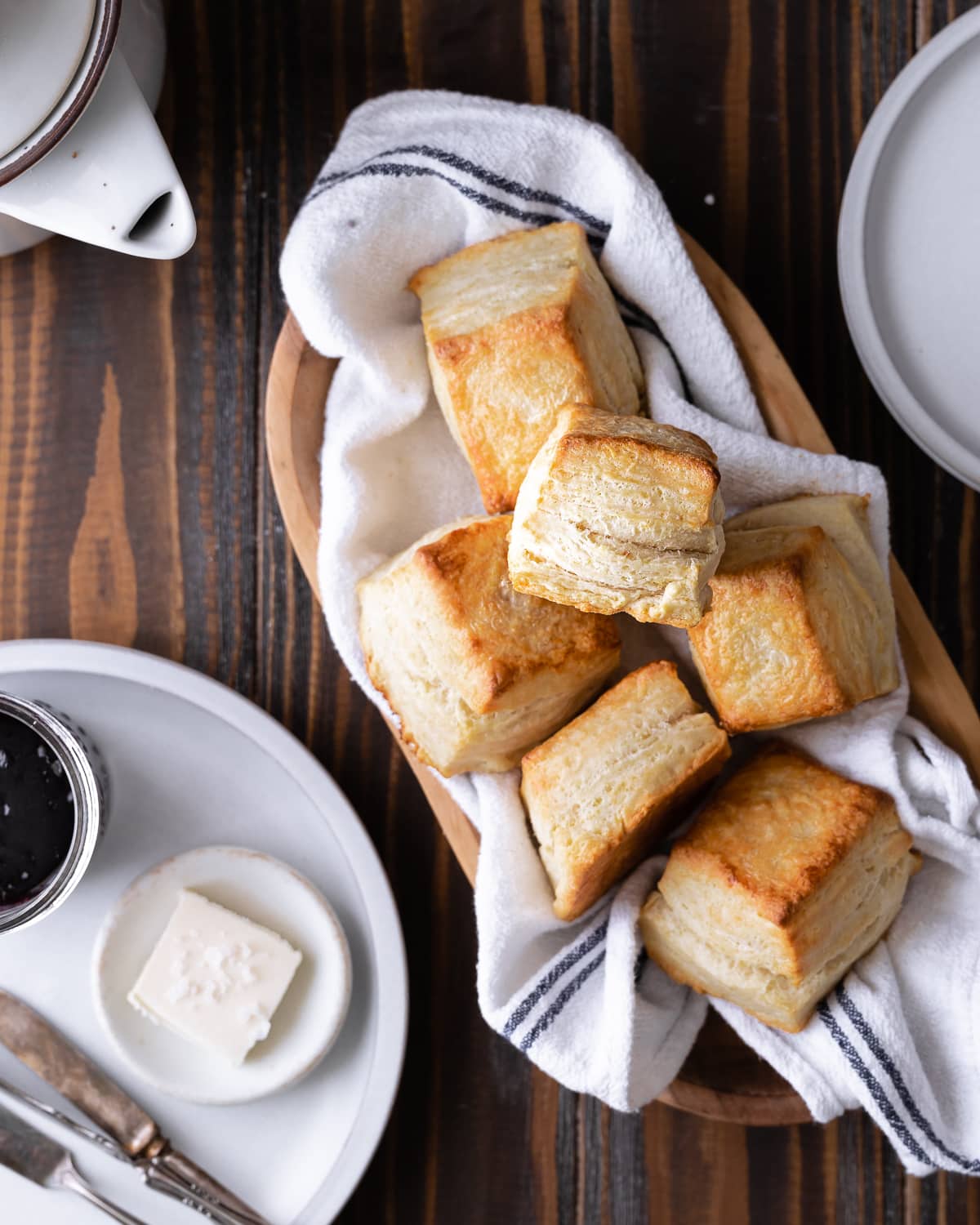
This recipe was first published in July 2022. I have since updated it with new photos, step-by-step instructions and tips for success.
Jump to:
- Why I love this recipe
- What is quick bread?
- What you need
- Start with cold ingredients
- Baking with your sourdough discard
- How to make sourdough discard biscuits
- Lamination creates flaky layers
- Baker's Tips
- Make ahead instructions
- What to serve with sourdough biscuits
- Recipe FAQs
- You May Also Like
- Sourdough Discard Biscuits
These biscuits have been a staple here on Make It Dough since 2022. It was one of the first recipes I published on my blog and I come back to it multiple times a year when I need a delicious breakfast treat. Before making these, I thought fluffy biscuits could only come from a can. But these homemade sourdough biscuits are so much better than anything you can get from the freezer section, and the best part is how easy they are to make.
Love breakfast sourdough recipes? Try my Sourdough Waffles and Sourdough Discard Pancakes Recipe.
These were some of the best biscuits I have had and were so easy to make. They were flaky, light and flavorful. Definitely making these again.
- Cathy
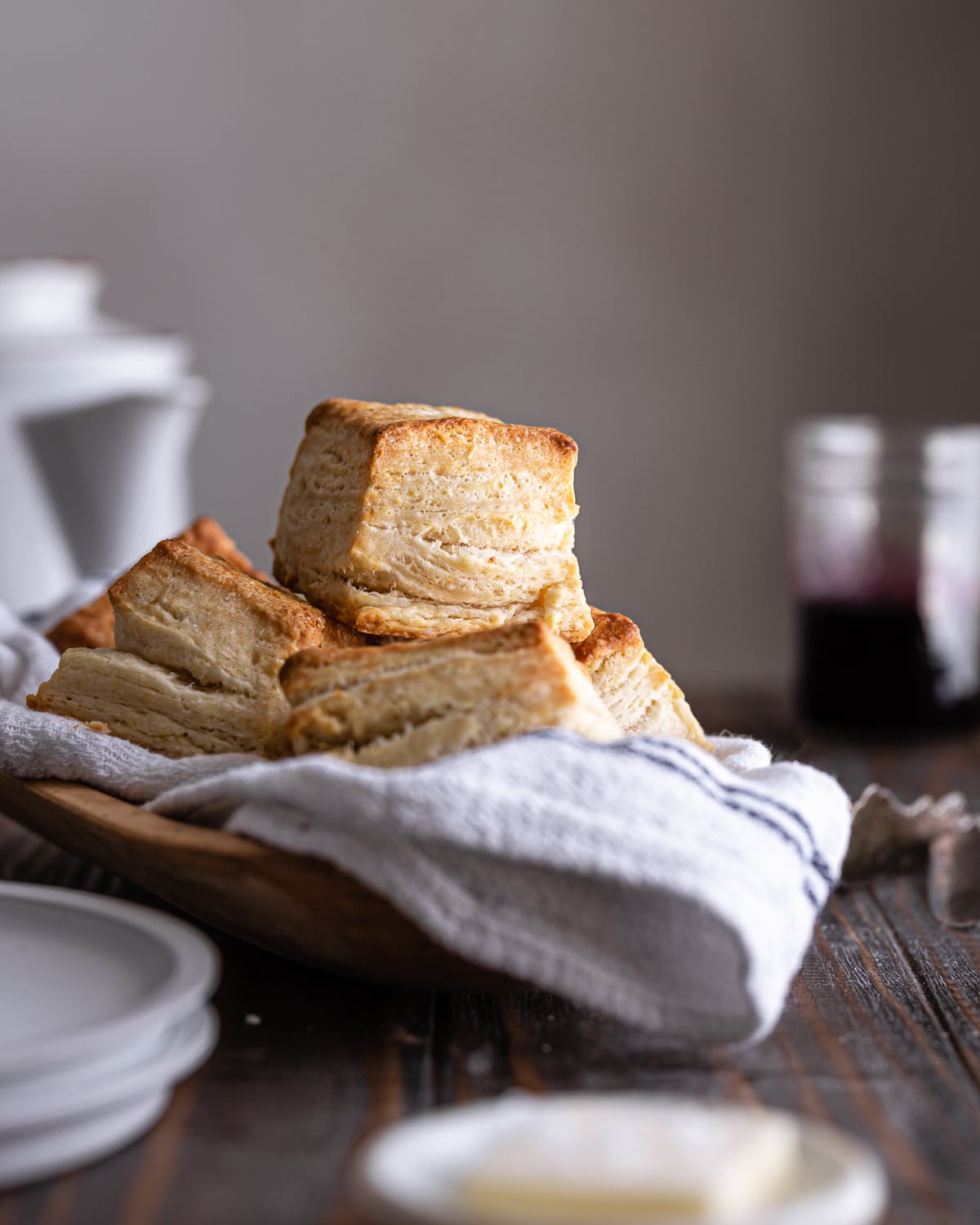
Why I love this recipe
- Easy, one bowl recipe!
- Mix the dough by hand - no special equipment required.
- Sourdough discard complements the richness of butter.
- Make tender, flaky biscuits in less than 45 minutes from start to finish.
What is quick bread?
Biscuits are an example of quick bread, a type of bread that uses chemical leaveners like baking soda and baking powder, instead of yeast or a sourdough starter. This allows the dough or batter to rise instantaneously during baking, so these recipes don't require proofing time.
Want more sourdough quick bread ideas? Try my recipes for Sourdough Irish Soda Bread, Sourdough Scones, Sourdough Sweet Potato Biscuits and Sourdough Cornbread.
What you need
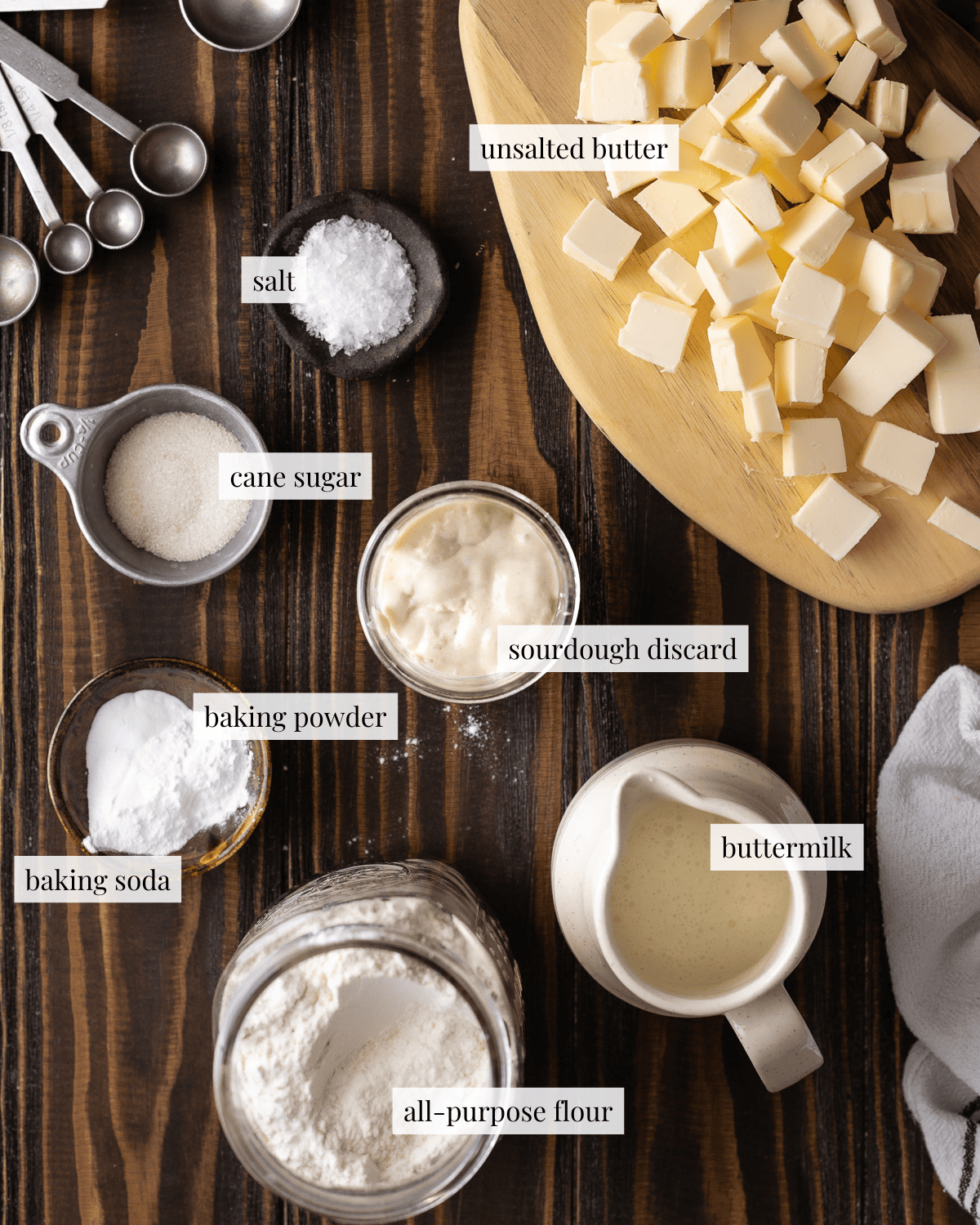
All-purpose Flour: The perfect protein content for tender biscuits, do not substitute whole wheat or your biscuits may before too dense and gummy
Sourdough Discard: If you don’t have any discard, add freshly-fed sourdough starter or 60 grams all-purpose flour and 60 grams water to your dough
Buttermilk: Substitute milk and add ¼ teaspoon apple cider vinegar into the dough
See the recipe card for detailed ingredient information.
Start with cold ingredients
For tender biscuits start with cold ingredients. Cold butter creates steam during baking, resulting in tall, pillowy biscuits with hundreds of flaky layers. While warm butter will simply melt out of the dough as it bakes and you'll end up with tough and greasy biscuits.
Baking with your sourdough discard
Sourdough discard is any portion of your starter that you will not use for bread baking. It's usually the excess that you get from the feeding process, you can throw this portion away or keep it to use in delicious recipes like Sourdough Chocolate Muffins or Sourdough Pie Crust.
Because you won’t be using an active sourdough starter to make these biscuits rise you can bake with your sourdough discard straight from the refrigerator without activating or feeding it first.
How to make sourdough discard biscuits
STEP 1: Make the dough
Dilute the sourdough starter in the milk. Rub the butter into the dry ingredients until the mixture is crumbly. Create a well in the center and add the discard mixture in the center. Mix and knead gently until a cohesive dough forms.
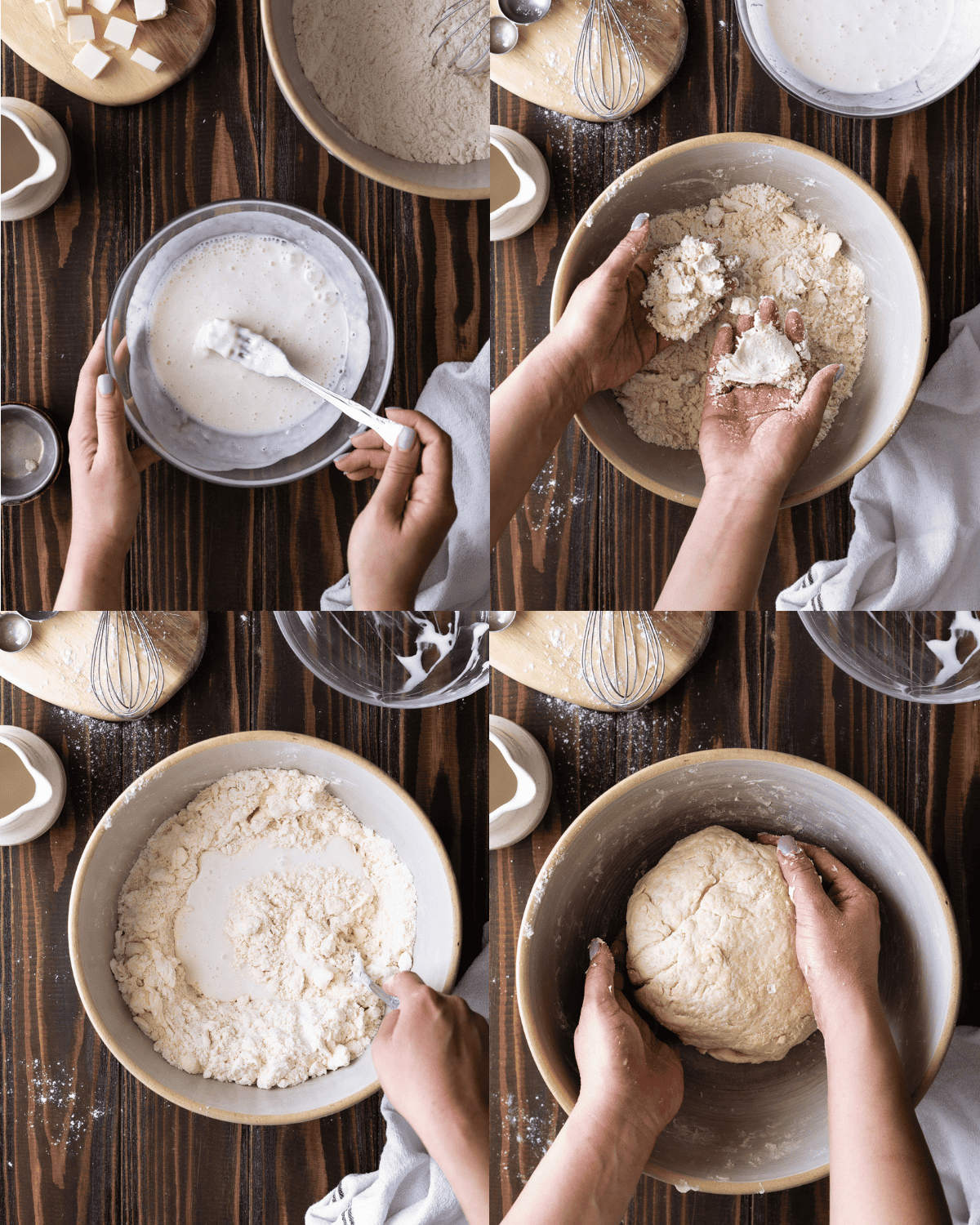
Check your chemical leaveners
Baking powder and baking soda have an expiration date. If your leaveners have been in your pantry for over 6 months, test them by combining a pinch with a little bit of vinegar, if it bubbles then it will still work for this recipe.
STEP 2: Laminate the dough
Roll the dough out into a rectangle, about ½-inch in thickness (the exact size doesn't matter here just the thickness). Divide the dough into 3 portions, stack the portions. Flatten the dough out gently into a 7-by-9 inch rectangle.

Lamination creates flaky layers
Lamination is a technique that involves folding and layering dough with butter to create biscuits that are flaky, tender, and full of layers as they puff up during baking.
STEP 3: Bake the biscuits
Brush the dough with melted butter and buttermilk. Bake at 425 F for 20 to 25 minutes.

Baker's Tips
- Weigh your ingredients instead of measuring by volume (tablespoons and cups), it’s more accurate and will help guarantee the success of your bake.
- Use buttermilk! It's acidic and when combined with baking soda, it creates a chemical reaction that produces carbon dioxide that makes your biscuits airy and light.
- If your dough starts feeling greasy and begins to melt, or if your dough begins to feel too sticky, don’t be afraid to wrap it up and refrigerate for a few minutes to let the butter solidify and the flour hydrate.
- Use a light colored baking sheet. A dark baking sheet will get too hot and may cause the bottom of your biscuits to burn.
- Bake at high temperature. A high oven temperature causes the water in butter to turn to steam, creating a quick rise and air pockets that make biscuits tall and tender. I start with a very hot oven, then lower the temperature to prevent burning.
Make ahead instructions
Once you make the dough, it can be frozen for longer term storage.
To freeze your biscuit dough:
- Divide your biscuit dough into 12 portions.
- Arrange your biscuits side-by-side on a parchment-lined baking sheet (no need to space them out)
- Freeze the tray uncovered for at least 1 hour.
- Transfer the frozen biscuit dough to an airtight container or a freezer bag.
- Store frozen biscuits in the freezer for up to 3 months.
To bake frozen biscuits
- Preheat the oven to 375 F.
- Arrange biscuits at least 1-inch apart on a baking sheet lined with parchment paper.
- Brush the top of the dough with melted butter and milk (or buttermilk).
- Bake the biscuits for 25 to 30 minutes or until golden brown.
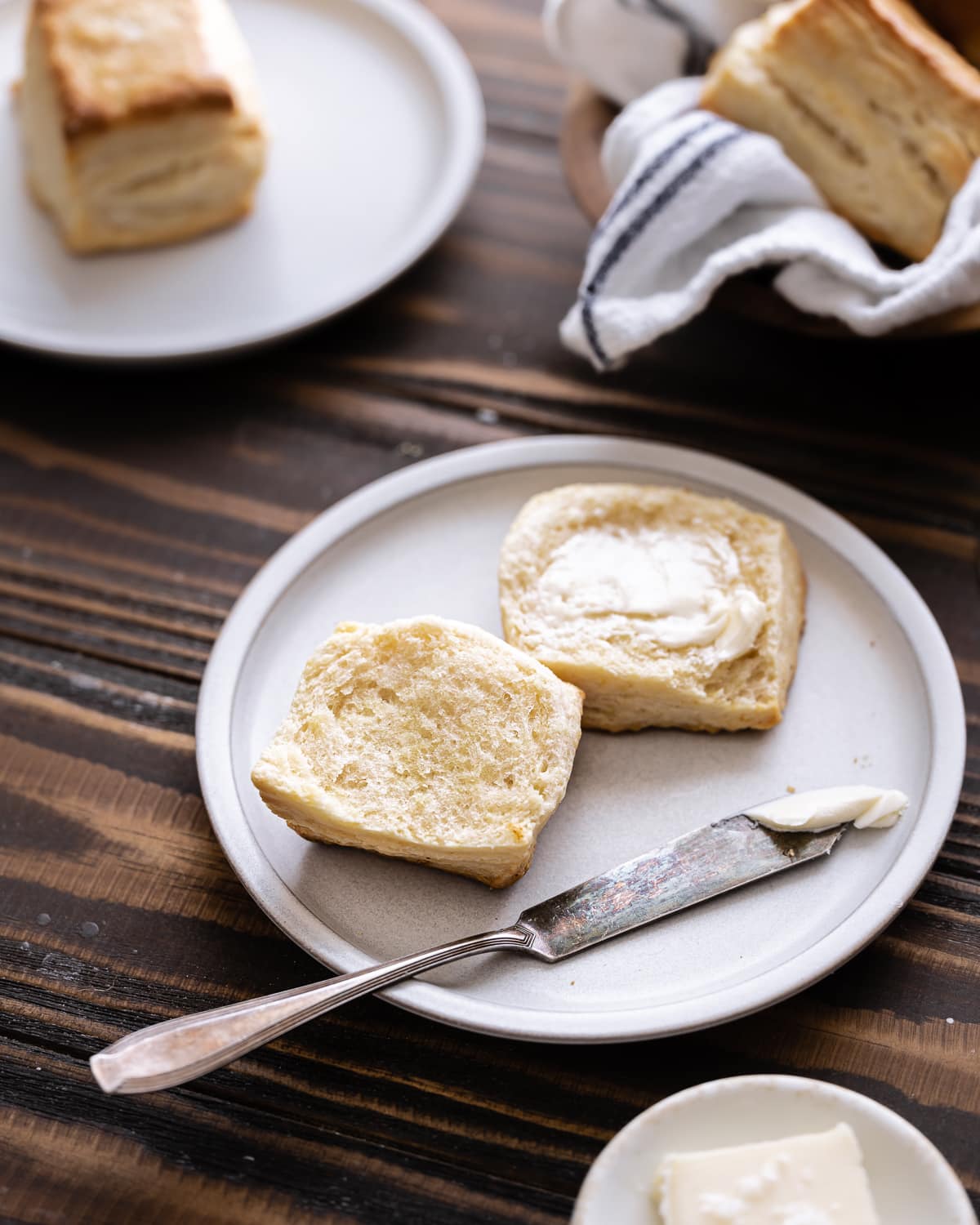
What to serve with sourdough biscuits
These biscuits have a sourdough tang that’s delicious with homemade cultured butter and blueberry preserves. They are sturdy enough for a bacon and egg breakfast sandwich. Or serve them with sausage gravy or as a side with stews for a hearty meal.
Recipe FAQs
Your leaveners are past their prime. Baking soda and baking powder have a shelf life and after a point are no longer viable. Test your leaveners by combining a teaspoon with a drop of vinegar, if it fizzes it's still good and you can still use it. If it does not it will no longer make your bread rise and it should be thrown away.
Your butter got too warm. As your biscuits bake, ideally the water in your butter will evaporate and your dough will puff up into individual flaky layers. However, if your butter gets too hot from too much handling, the butter will simply melt out of your dough. If your butter begins to feel too soft as you're working the dough, simply refrigerate it for 15 minutes before continuing.
Biscuits require a light hand. Knead your dough enough so that all of the flour is hydrated but do not work your dough too much or it may develop too much gluten.
Biscuits and scones are both quick breads. Scone recipes usually include eggs while biscuits do not.
No, biological leaveners such as sourdough starters require a combination of time and gluten development to make baked goods rise. As yeast ferments, it releases CO2 which gets trapped by strong gluten networks in the dough. Gluten development will negatively affect the texture of your biscuits.
You May Also Like
Did this recipe rise to the occasion?
★★★★★
Please leave a star rating and a comment. Your feedback helps me create more delicious sourdough recipes. I read and truly appreciate every message.
Don't forget to PIN this recipe on Pinterest to save it for later!
Thank you for your support!
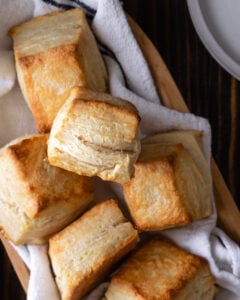
Sourdough Discard Biscuits
This section may contain affiliate links
Ingredients
Dough
- 388 grams all-purpose flour
- 10 grams baking powder
- 2 grams baking soda
- 6 grams salt
- 12 grams cane sugar
- 120 grams sourdough discard
- 180 grams buttermilk see note
- 226 grams unsalted butter chilled, cut into ½ inch pieces
Egg wash
- 28 grams buttermilk
- 14 grams unsalted butter melted
Click US Customary to view volume measurements
Instructions
- Prep: Preheat your oven to 450 F. Line an 18 by 13 inch baking sheet with parchment paper or lightly grease a cast-iron skillet.
- Make the dough: In a large bowl, whisk together flour, baking powder, baking soda, sugar and salt.388 grams all-purpose flour, 10 grams baking powder, 2 grams baking soda, 6 grams salt, 12 grams cane sugar
- Stir the sourdough discard and buttermilk together until the sourdough discard is dissolved. Set aside.120 grams sourdough discard, 180 grams buttermilk
- Rub the butter pieces into the dry ingredients (or use a pastry cutter) until all of the flour is coated in fat and the mixture resembles wet sand.226 grams unsalted butter
- Make a well in the center of the flour. Pour the sourdough mixture into the center. Stir until your mixture forms a shaggy dough.
- Knead the dough: Knead the dough until all the dough appears cohesive and no dry bits of flour remain.
- Laminate the dough: Transfer the dough on a lightly floured surface or a piece of parchment paper. Using a rolling pin, flatten the dough out into a ½-inch thick rectangle.
- Divide the dough 3 portions, stack the dough on top of each other.
- Shape: Flatten the dough out into a 9 by 7-inch rectangle. Using a bench scraper or knife, trim the edges off your dough. Cut biscuits into a 4 by 3 grid or use a 2-inch biscuit cutter to make 12 portions.
- Bake: Whisk the milk and melted butter together. Using a pastry brush, brush the tops of the dough (avoid the sides).28 grams buttermilk, 14 grams unsalted butter
- Reduce oven temperature to 400 F and bake biscuits until deep golden brown on bottom and golden on top, 20–25 minutes.
- Transfer the hot biscuits into a large bowl lined with a tea towel to keep them warm.
- Enjoy and store: These homemade biscuits are best enjoyed fresh from the oven. But will keep well in an airtight container at room temperature for up to 3 days.
Tips
These recipes were developed and tested using grams for precise measurements. To increase your chances of success, I recommend investing in a kitchen scale. I've included rough volume estimates (in tablespoons and cups), but they might not be totally accurate.
Remember all ovens are unique, these recipes were tested in my oven which runs cooler than others. You might need to lower the temperature if your bake appears to be browning too quickly. Monitor your bake closely and make adjustments if needed.
Notes
Nutrition
I am not a nutritionist or dietitian, any nutrition information provided is an estimate.

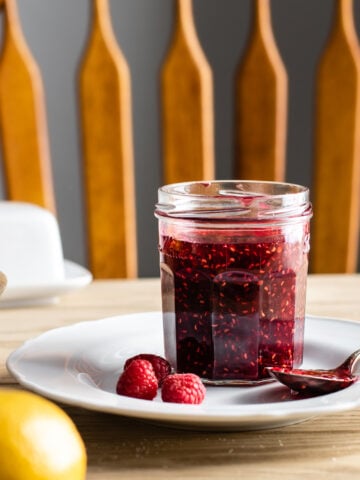
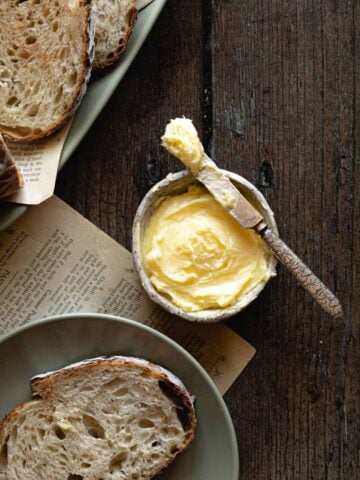
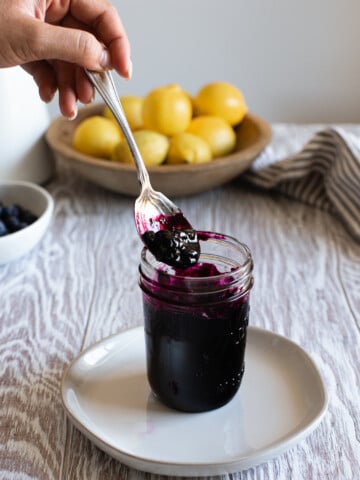
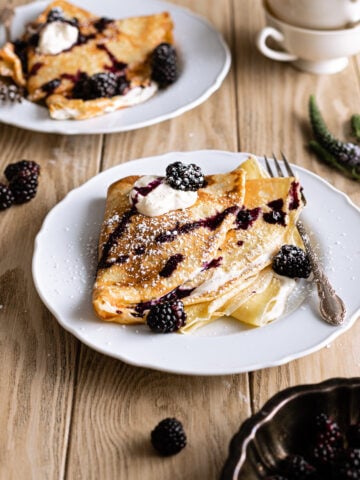
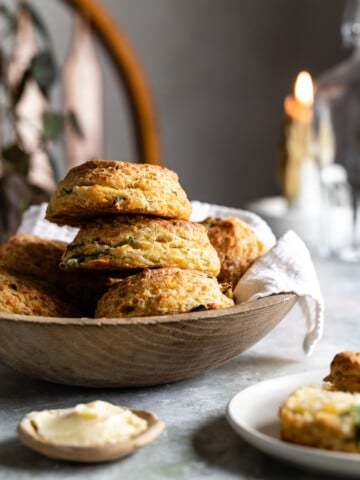

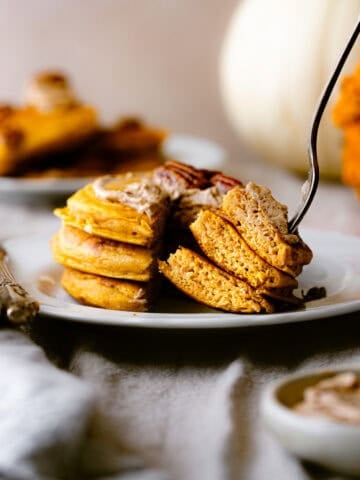

Denise says
These were very easy to put together. I made 4 batches, for the hunting camp. I used my stand mixer with the pastry cutter, while one was baking, I made the next. Good taste, tender & flaky. First time in years making without white Lily SR flour and these impressed me!
Hannah Dela Cruz says
I'm so glad you were impressed with this recipe!
Polly says
They were delicious…… Best recipe I’ve ever had.
I used a 12” cast iron skillet, I put it in the oven to heat when I turned the oven on. When I was ready to put the biscuits in I rubbed some salted butter on the bottom of the skillet then arranged the biscuits.
The wash with the buttermilk and butter work’s really well.
I used a cold marble stone and a bench scraper to incorporate everything.
It helps to keep the dough cold, and hands warm up the butter too quickly.
They came out flaky with layers. My husband is not a fan of biscuits but these changed his mind.
Thanks
Hannah Dela Cruz says
Always love converting biscuit nonbelievers! Thank you for sharing your process.
Jeff Van Pelt says
Morning.
My Wife and I do ALOT of cooking and I've made my fair share of biscuits.
These are awesome. They're soft on the inside, but flaky at the same time, and stout enough to sandwich anything in between.
Since our kids are grown and out, we'll keep a couple of dozen in the freezer to have on hand and pull a few out to throw in the toaster oven whenever we want some biscuits.
Definitely our new go-to.
Thanks for sharing this recipe.
Jeff & Michelle Van Pelt
Churubusco, Indiana.
Liz says
I feel like it took a lot of kneading to incorporate all the flour. Is this correct?
Hannah Dela Cruz says
It shouldn't take a ton of kneading since this will create too much gluten development. But you should try your best to incorporate all of the flour into your dough.
Patrick Ingalls says
These are great. The recipe looked so good I made a triple. Everything went great until I made my 3 tiers to roll out. Recipe gave me a dimension but how big now? I decided about - 3/4”. After baking, they were golden and flaky. My wife loved them. Thank you for sharing this recipe.
Hannah Dela Cruz says
Glad your biscuits turned out great!
Cathy Parks says
These were some of the best biscuits I have had and were so easy to make. They were flaky, light and flavorful. Definitely making these again.
Hannah @ Make It Dough says
So glad the recipe worked for you and that you loved them!
Amara C. says
My biscuits turned out so good! My daughter has a dairy allergy, I used whole fat oat milk and added the apple cider vinegar as instructed above and used dairy free butter! I’ll definitely make these again, my family loved them!
Hannah @ Make It Dough says
I'm so excited to hear that the plant-based substitutes worked well. I'll have to try this myself!
May says
Hi, Can I make this recipe without the sourdough discard?
Hannah @ Make It Dough says
Yes! I added suggestions for what to do if you don't have sourdough discard in the recipe.
Michelle says
can I use self-rising flour in place of the AP flour, salt and baking powder?
Hannah @ Make It Dough says
If you are very familiar with using self-rising and understand the substitutions then yes. However, I've never tried using it in this recipe so I can't guarantee your results.
Make It Dough says
Just updated the recipe! Thanks for pointing that out!
maggie says
I see comments about buttermilk but the recipe calls for whole milk. I am confused... I want to make these but have only 2% milk. Will that work or do I need whole milk or buttermilk?
Make It Dough says
2% should work fine!
Maggie says
Thank you. Now how much sugar? Not in ingredient list but mentioned in the instructions
Kurtis Arnold says
The best. This biscuit tastes like how you think biscuits were meant to taste
Heather says
Can I sub the buttermilk for yoghurt?
Make It Dough says
You can, but you may have to add more of the thickness of yogurt in comparison to buttermilk. I'd add water a little bit at a time until your dough comes together 😁
Amanda says
These biscuits are delicious! I didn't get quite the rise you did but plan to try again. I did notice you mention mixing sugar in but don't have it listed in your ingredients. I'm also trying to print the recipe and can't find a print version. Do you have a feature that allows me to print a 1-2 page copy of the recipe with a picture of the biscuits without all the extra details? When I print from this page it's 3-4 pages long.
Make It Dough says
Glad you enjoyed the biscuits! Are your raising agents fresh? Or did you use buttermilk? The reaction between the acids and basics in the recipe usually helps with the height in these biscuits. I'm sorry but I don't currently have that feature!
Deb says
You can grate cold butter into the flour mix. Best pastry hack ever. No need to cut it in with a pastry cutter. Use the coarse side of the grater.
Make It Dough says
Ooh great tip, Deb! I'm scheming on a 100% whole grain version of this recipe, I'll try your method for that.